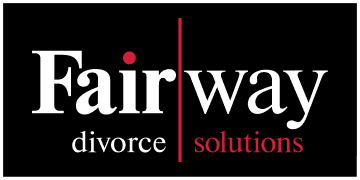Getting Things Done: The Art of a Stress-Free Divorce Blog Series
10 June 2015
Th in order to constantly improve and move forward, the Fairway Divorce Team has been reading David Allen’s text, Getting Things Done: The Art of Stress-Free Productivity. Allen’s methods for stress-free performance at work and in life have influenced our business extremely; we now follow his model in every aspect of our business.
in order to constantly improve and move forward, the Fairway Divorce Team has been reading David Allen’s text, Getting Things Done: The Art of Stress-Free Productivity. Allen’s methods for stress-free performance at work and in life have influenced our business extremely; we now follow his model in every aspect of our business.
In fact, his teachings have had such a large impact on us that we have even decided to create a blog series connecting his methods of moving through a stress free divorce by being productive. Each member of our team will write a blog sharing his or her thoughts on Allen’s methods and how they are related to divorce.
While reading through the chapters of Allen’s text, I realized that chapter three, Getting Projects Creatively Under Way: The Five Phases of Project Planning, depicts strategies that must be shared with Fairway Divorce followers as they can support you through a less stressful divorce.
Most importantly, no one has the intention of entering a marriage for it to result in divorce and no one wants to go through the emotional obstacles of a divorce.
Allen states: “there is a productive way to think about projects, situations, and topics that create maximum value with minimal expenditure of time and effort…when people do more planning, informally and naturally, they relieve a great deal of stress and obtain better results”.
David Allen and the Stress-Free Divorce
A stress-free divorce is difficult to achieve, but why not try to make it less stressful for yourself by managing it in a productive manner? David Allen breaks down how to efficiently plan a project or event into five steps:
- Defining purpose and principles
- Outcome visioning
- Brainstorming
- Organizing
- Identifying next actions
Let me clarify how you can take the above steps and relate it to planning a divorce:
Defining purpose and principles:
Allen explains that your intention for the event is your purpose, and your principles create the boundaries for your plan.
- Why are you getting a divorce?
Outcome visioning for a stress-free divorce:
This part of Allen’s planning model allows you to visualize what the physical world will look like at the end.
- What do you want your children’s perception of the divorce to be?
- How do you want to feel five years after your divorce?
- How do you want your relationship with your ex defined?
Brainstorming:
Brainstorming is used to fill the gap between your purpose and your visualized end result; the actions that you need to take to get to where you want to be.
- What key communication events need to happen?
- Scheduling
- Risks
- Milestones
- Constraints
- Estimated costs
- Evidence
Organizing:
Moving the brainstorming into a chronological order.
- What needs to happen first?
Identifying next actions:
Creating the next action for each entry on the organization list.
- What needs to happen to get this step rolling in the right direction?
- What is the step that happens after the first step?
It is difficult to know what to do when going through a divorce, you are not alone. You can read and listen to other people’s stories about how they dealt with the process, but they are not you. Therefore, you should create your own stepping-stones to ultimately reach your clear road to a new life.


